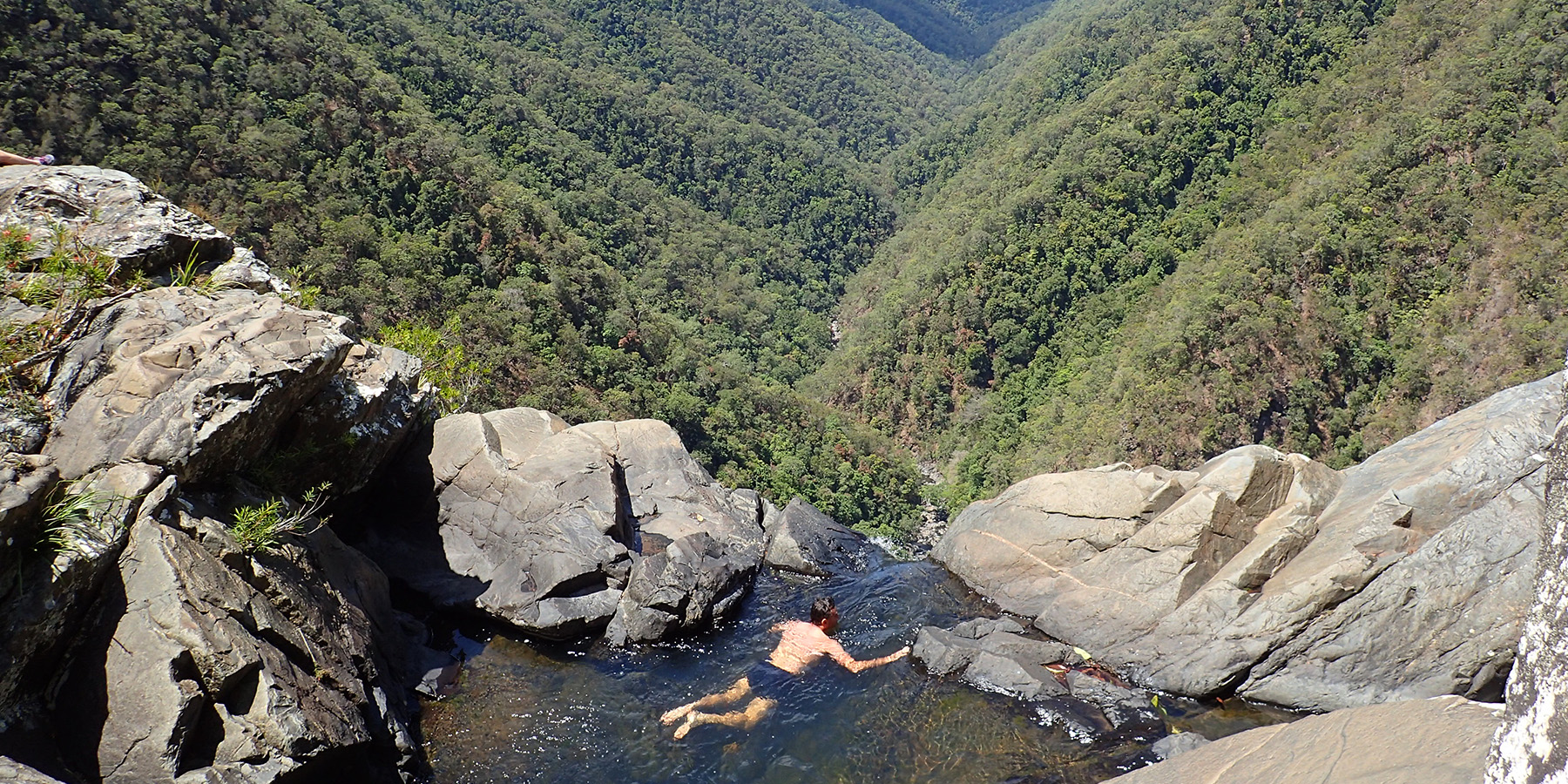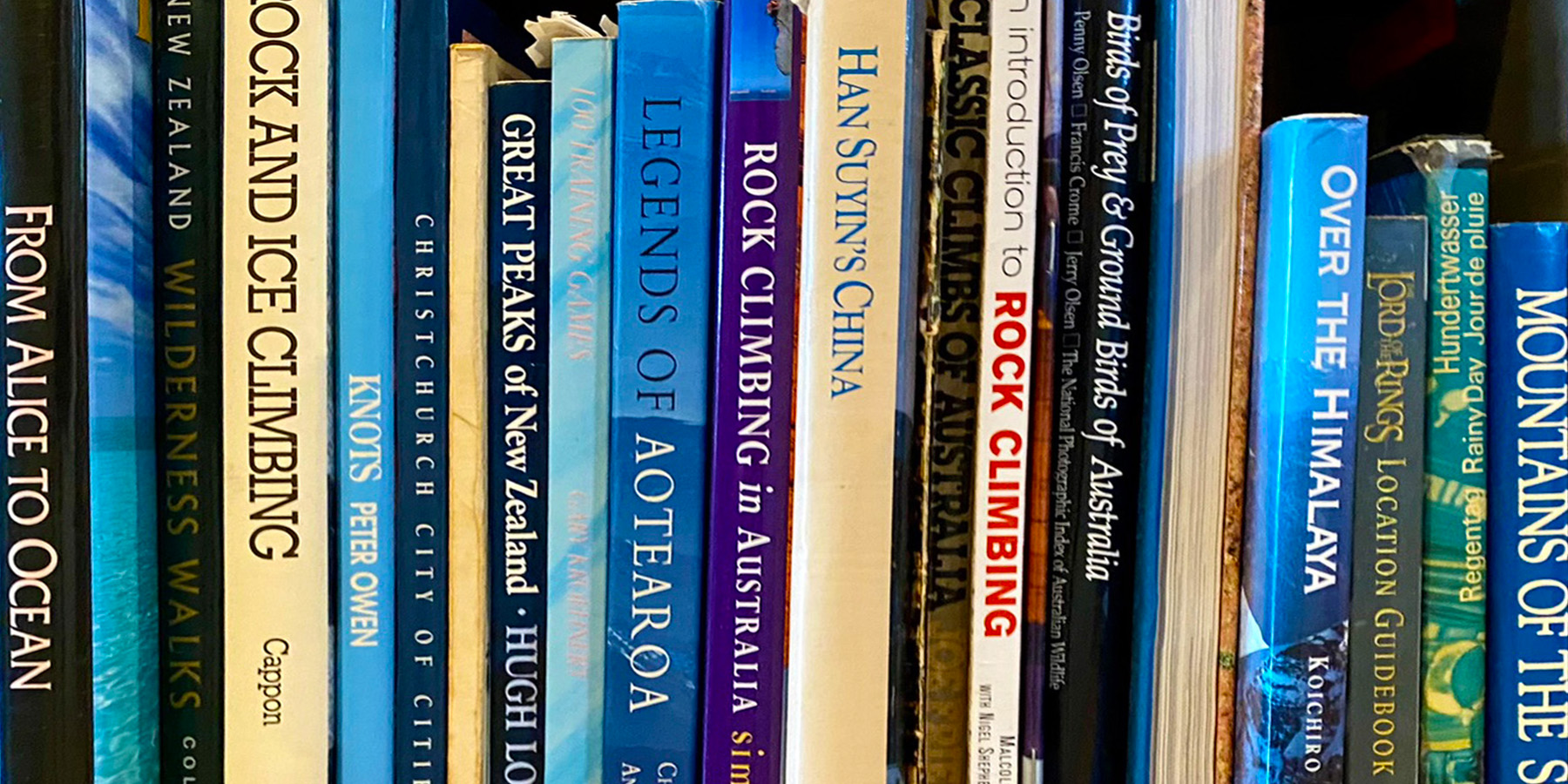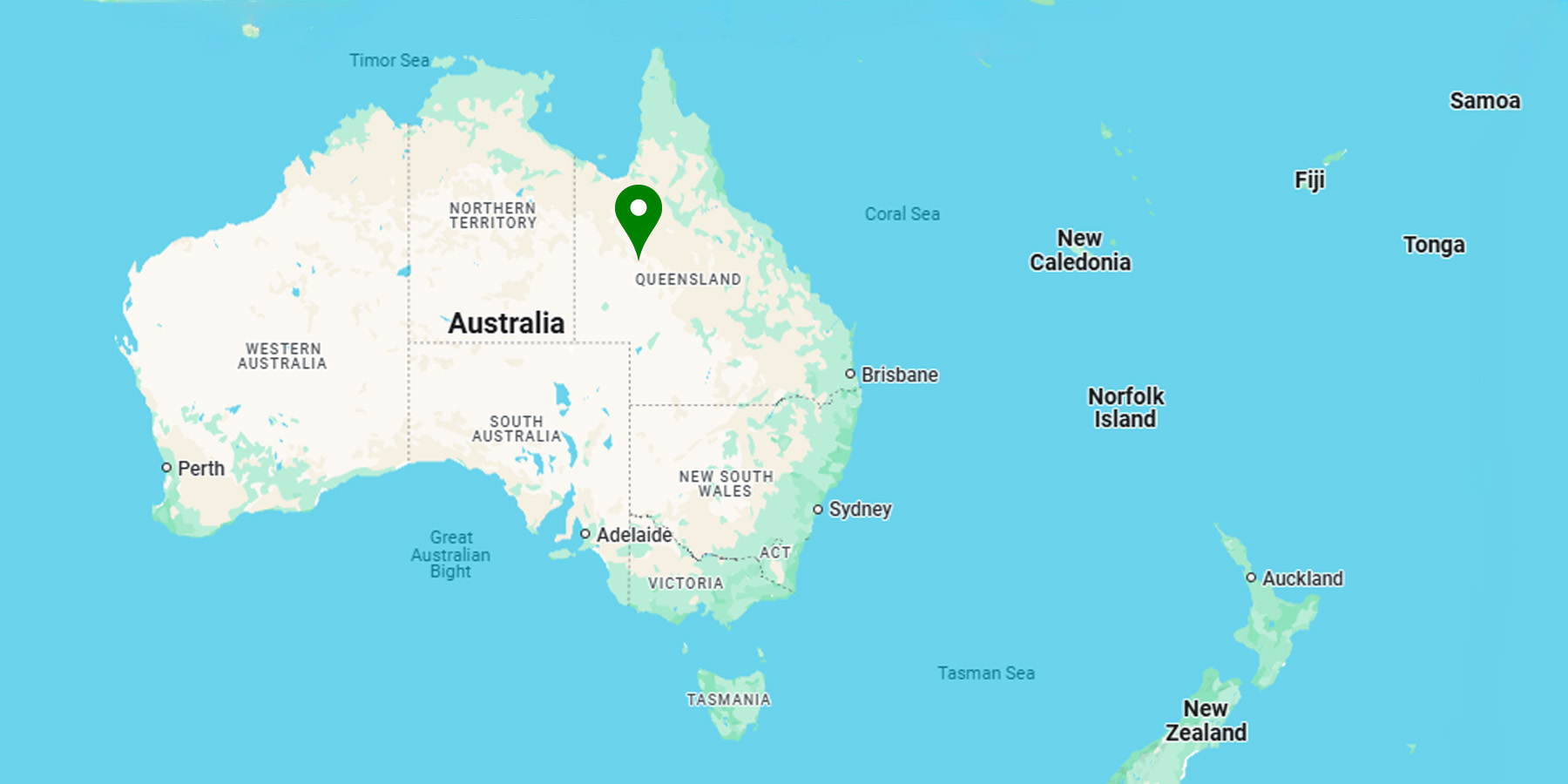
Windin Falls, Sandra Botella
What is ‘wild swimming’?
Swimming outdoors in nature – in a river, a lake, the ocean, dam or a swimming hole
The practice or activity of swimming for pleasure in natural waters such as rivers, ponds, swimming holes, streams, rivers, oceans
(Collins Dictionary)
Open water swimming is a swimming discipline which takes place in outdoor bodies of water such as open oceans, lakes, and rivers.
(Wikipedia)
Where to go ...
Tips & Tricks
Blogs & Articles
You can survive a rip current by knowing your options

Download POSTER
You can escape a rip by knowing your options:
- Stay calm.
- Raise an arm to seek help.
- Float with the current until it releases you.
- Swim parallel to the shore or towards breaking waves, use them to help you in.
Learn More: Rip Currents – SLS Beachsafe
How to Be Safe During Outdoor Swimming in Queensland
Swimming in a pool is awesome. But once your swimming lessons are over and your confidence is through the roof, you may want something different. A Mythical Swimmer needs a good challenge, right?
Swimming pools are good starting points for most learners and granted they do provide that much-needed relief you need in the heat of summer. Besides, pools offer an easily accessible way to bust stress and burn calories without a need for extensive travel.
With time, however, you will find that your brain needs more motivation to help you perform what is at times a solitary and repetitive sport. If you are stuck in a rut and finding it more challenging to invoke solo discipline, it could be a good sign that you need to take your love for swimming to the outdoors.
What is outdoor swimming?
Outdoor swimming can be wild, done in open water or less risky natural swimming holes and warm shallow lakes. Safer outdoor swimming sites are very much like outdoor swimming pools but are scenic, invigorating and beautiful.
Here, you will not have face random aggressive swimmers who want to cut lanes and spoil your good mood. Riskier outdoor swimming activities such as deep-water swims, jumping, diving or river swimming can give you that adrenaline high, but you need to be aware and prepared for their risks.
Why would you want to swim outdoors in Queensland?
While social swimming in pools and clubs amongst friends can challenge you to swim harder and faster, you will be missing loads of fun if you do not try outdoor swimming. This is especially true for you if you are a swimmer in Queensland.
This beautiful corner of heaven has some of the most beautiful natural swimming holes in the world.
They might be harder to get to than your local club’s pool or the beach, but a dip inside them is very rewarding. Natural swimming holes are surrounded by extreme beauty and create the perfect photo ops.
Visit the Currumbin Rockpools for instance and slide smoothly into the cool mountain freshwater pools. You can later sunbake and have a picnic on the grass near the water.
Take a trip to Springbrook National park and dive into the Twin Falls’s three rock pools, the perfect summertime dip. You can also join various open water swimming activities in Queensland and set your personal best amongst Queensland’s best swimmers.
Grab those goggles and join annual swim events such as the Noosa Summer swim festivals held at the Sunshine Coast or the Coolangatta Cooly ocean swim event at the Gold Coast, to name but a few.
Queensland beaches are pristine, and the territory’s perfect swim sites enjoy over 283 days of warm sunshine annually.
How to stay safe while swimming outdoors in Queensland?
Swimmers in Queensland will find beautiful idyllic beaches, whose sand is so white that all they want to do is to toss away their sandals and head for the water.
As hard as it can be to ignore the water’s call, you simply cannot throw away your heavy clothes and jump into the shallows in Far North Queensland. The rightful inhabitants of these waters would not allow you to do this in certain seasons of the year.
If you, for instance, visit any of the beaches in an arc running from Exmouth to Gladstone in Queensland between October and May, you will find them infested with the Irukandji jellyfish.
This period is known as the stinging creature’s high season, so you need stinger suits on your if you want to indulge. You might also need to read the signs and swim in stinger enclosures for safety.
The stinger enclosures cannot protect you from the Irukandji jellyfish which are small enough to pass through the net’s holes. These jellyfish only cause mild pain on stinging, but the sting can induce the Irukandji syndrome afterward, and that can be fatal.
These waters are also home to the Box jellyfish that gives dreadfully painful stings, which can be fatal if severe.
There is, nonetheless, more to worry about in the water than jellyfish. In the northern territory, you will find crocodiles in the Adelaide River. You could also encounter these ancient creatures if you walk alongside the beach at night at Palm Cove.
Beyond these dangers, you also have to be on the watch out for other dangers such as string currents from recent rains. Below are tips that will help you stay safe when taking an outdoor swim in Queensland.
Tips on how to stay safe when swimming outdoors
If you are going to take an outdoor swim, you need to do so within your limits. This limit is greatly determined by your ability to acclimatize, water conditions, skill, endurance and your understanding of the water body that you are in.
Your prowess in indoor pool swimming, therefore, does qualify you as a strong outdoor swimmer.
Always swim when you are sober
Imbibing before a swim can impair your judgment, as well as your body’s ability to regulate its temperature.
Start with outdoor locations that have lifeguard support
A well-guarded site will help you to beef up your swimming stroke in safety and test your endurance level. If you are going to start in a remote location, check for any boat traffic and hazards such as tides and currents first.
Acclimatize
Take to cold water gently and gradually. If you are not used to the cold, limit your swim time. Wear a wet suit for warmth and buoyancy.
Understand the conditions of the water
Do not deep dive into an unknown water body. Ask for the assistance of local guides if you are unsure. They know the best swimming spots as well as areas that have quicksand or rip tides.
Look for local hazard signs too and take some time to understand where people swim the most. It is best to swim when there are other people in the water.
Check the weather
If for instance there has been rain, the water may be dangerous due to changes in flow and flooding. Winds too can adversely affect the behaviour of open water.
Protect yourself
Swim inside stinger enclosures and wear protective clothing for sting safety. Stay away from predators such as crocodiles and swim between safety flags when in waters patrolled by lifeguards. Do not swim at night.
Conclusion
The natural beauty of North Queensland is unrivaled in many aspects, and its tropical warmth makes every day a holiday. To get the best out of your outdoor swimming excursions, follow the simple precautions above.
Nikos Vasilellis
Nereids Aquatic Coaching
Wild Swimming in Cold Water and 13 Tips to Get You Started

The benefits of wild swimming. Well yes! It really is (mostly) that enjoyable! Once you’ve gotten over the initial shock, there’s something about swimming in cold water that just makes you want to come back for more.
Source
Cool of the Wild
Beginner’s Guide to Wild Swimming
Wild swimming has attracted significant media attention over the last couple of years writes Laura Moss. Whether it’s Robson Green swimming the infamous Corryvreckan whirlpool, Lewis Gordon Pugh swimming up Everest, or David Walliams swimming the Thames, everyone seems to be at it. The question is, why?
And why now? For some of us, swimming in lakes, rivers and the sea is as natural as the environment in which we bathe. For others, the idea of swimming anywhere other than the local baths is totally alien.
In this article, I aim to explain exactly what constitutes ‘wild’ swimming, why you should do it, and identify some of the key practicalities you should consider. Above all, I aim to encourage you to jump in and give it a go.
Source
Tim Moss
The Next Challenge
Find a book!
Search for books and DVD’s in the Shop.
(search in Shop Categories)
Discover
Search for wild swimming providers in Discover
(search on ‘swimming’ in Select Activity)
Recommend a Resource
Have an interesting or useful resource or link to share?
Let us know by Recommending a Resource




